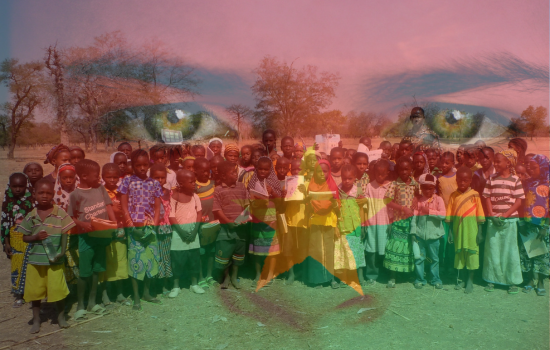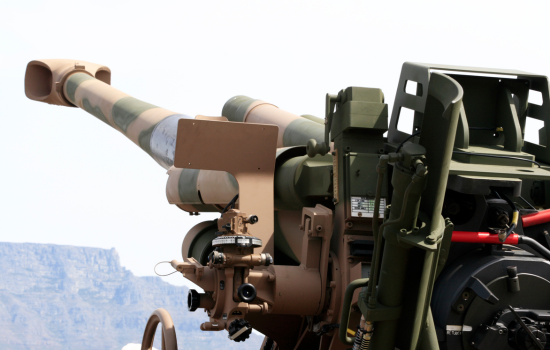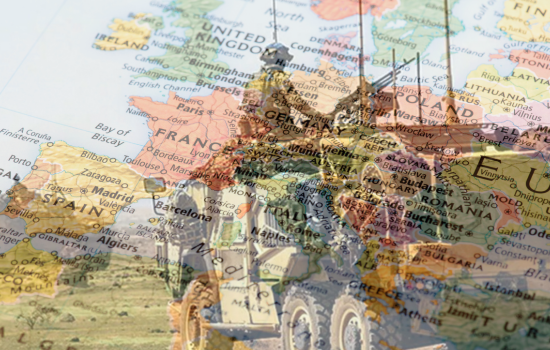The School Massacre in Peshawar (Pakistan)
At least 148 people, most of them children (132), were killed when Taliban gunmen attacked the Army Public School in Peshawar. The overwhelming majority of the victims were pupils at the school. The Army Public School was run by the army, and a majority of its pupils were children of military personnel in the region. Many of the teachers killed were wives of the military in Peshawar.
Pakistani officials believe that a group of 6 -9 militants attacked the school. After an exchange of fire with security forces, six of the militants blew themselves up inside the administration block and two others blew themselves up outside of the block.
Condemnations poured in from across the globe, including from all major political leaders and notables in the country. Prime Minister Nawaz Sharif and Army Chief General Raheel Sharif also condemned the assault and rushed to Peshawar to show their support for the victims and the troops partaking in the operation to clear the school of terrorists. A three-day mourning period was also announced by the federal government.
The Attack
The militants arrived at the school by car. They set the vehicle on fire in order to divert attention before entering the school.
The militants, wearing paramilitary uniforms, used ladders to scale the rear wall of the school on Warsak Road, cut the barbed wire at the top of the wall, and then ran onto the school premises firing their weapons and throwing grenades in several directions. They all headed for the main auditorium where an instructor was giving a first-aid lesson to students in the school’s senior section.
The students in the hall appear to have rushed out after hearing the first round of shooting and they ran straight into the militants who were blocking the two doors, waiting for them. By the time the Pakistani Special Services Group (SSG) arrived and launched its rescue operation within 10 to 15 minutes of the assault, the militants had already carried out much of the carnage.
During the terrorist attack, the militants were in direct communication with their handler. “We have killed all the children in the auditorium,” one of the attackers told his handler. “What do we do now?” he asked. “Wait for the army people, kill them before blowing yourself,” his handler ordered.
According to a Pakistani security official, this was one of the last conversations the attackers and their handler had shortly before two remaining suicide bombers charged towards the special operations soldiers positioned just outside the side entrance of the Army Public School’s administration block.
Pakistan knows the names of the attackers and is in possession of the transcripts of the conversation between one of them, identified as Abuzar, and his handler, ‘Commander’ Umar. Umar Adizai, also known as Umar Naray and Umar Khalifa, is a senior TTP commander.
Pakistani security officials believe that the handler made the calls from Nazian district in Afghanistan’s Nangrahar Province, and they want the Afghan authorities to take action.
A spokesman for the outlawed TTP, led by Mullah Fazlullah, claimed responsibility for the attack. Fazlullah is believed to be in Nazian district, Nangarhar Province, in eastern Afghanistan.
Mullah Fazlullah replaced Hakimullah Mehsud as leader of the TTP following the latter’s death in a U.S. drone strike in November 2013. Fazlullah hails from the country’s Swat valley and is the first TTP leader who is not a Mehsud. Appointed by a tribal council, he has struggled to contain internal discord among the group’s factions, especially those within the Mehsud tribe, which makes up the majority of the TTP. It is widely believed that the Mehsud tribe now recognizes Mullah Fazlullah as its leader.
Muhammad Khorasani, spokesperson for the TTP, told Al Jazeera that the suicide bombers had been given orders to allow the youngest students to leave but to kill the rest. According to Khorasani, the attack was in retaliation for an ongoing Pakistan Army operation against the TTP and its allies in the North Waziristan tribal area. The TTP said many of its members’ relatives had been killed in the campaign and the attack on the school was in revenge for those deaths.[1]
A video posted on December 18, 2014, on a Web site used by the Taliban, shows a man with a thick, chest-length beard, holding up an admonishing finger as he seeks to justify the December 16 attack. The caption identified him as Umar Mansoor. The Taliban video describes him as the “emir”, or leader, of Peshawar and nearby Darra Adam Khel.[2]
The TTP claimed responsibility for the attack in Peshawar but the possibility that there was operational cooperation between the TTP, Al-Qaeda and Uzbek militants cannot be ruled out.[3]
The Rescue Operation
When Special Services Group (SSG) forces arrived, fighting ensued and the militants were forced to make a run for the administration block, just a few meters away.
Security officials believe the death toll could have been far higher had the militants reached the junior section before the arrival of SSG forces.
The SSG team arrived through the front gate, which was covered by two armored personnel carriers. The precise number of militants and their location was unknown to them. As the SSG team moved from block to block, the first major priority was to secure the junior section.
The militants fired at the SSG team from inside the administration block. Four of the militants blew themselves up inside the lobby of the block when they were cornered, and the impact was huge and devastating. One of the bombers blew himself up in the office of the headmistress.
The last two bombers charged towards the SSG men who had taken positions on either side of the flank entrance to the block. One of them blew himself up and after a while, the second one did as well.[4]
There were about 2,500 students in both the senior and junior sections at the time, and troops rescued 960 students and staff members during the operation.[5]
Days after the school massacre, Army Gen. Raheel Sharif, head of the country’s military, signed death warrants for six “hard-core terrorists”. The warrants cannot be appealed and the prisoners are expected to be hanged within days.[6] As an immediate response to the massacre, Pakistani warplanes and ground forces killed at least 77 militants in a northwestern tribal region near the Afghan border.[7]
Summary
The death toll of the Peshawar school attack makes it the deadliest terrorist attack since bombings at a public rally to welcome PPP Chairperson, Benazir Bhutto, in Karachi in October 2007, which left 139 people dead. The Peshawar school massacre has once again exposed the persisting gaps and vulnerabilities in Pakistan’s security infrastructure, which terrorists have time and again exploited with relative ease. A replication of, or increase in, such attacks in the near future cannot be ruled out, but the school massacre should serve as a strategic turning point and a game changer in Pakistan’s counter-terrorism policy.
Pakistan today is home to a myriad of jihadist groups from the Afghan and Pakistani Taliban, to Punjab-based groups focused on Indian-controlled Kashmir, as well as Al-Qaeda and the Islamic Movement of Uzbekistan (IMU). Pakistan’s tribal region along the border of Afghanistan has been called a “haven for terrorists” by western intelligence agencies and media.
Pakistan had long been accused by its neighbor, India, and western nations like the United States and the United Kingdom, of playing a double game with militant groups, supporting those it thinks it can use for its own strategic ends.
Earlier in 2014, the government held tentative peace talks with the TTP but it suspended them after two attacks were carried out near Pakistan’s largest airport in Karachi in June 2014. Since then, Pakistan’s military has been conducting a ground offensive aimed at clearing out TTP and other militants in the loosely-governed tribal areas of northwestern Pakistan. Since June 2014, more than 1,000 insurgents have been killed and the campaign has displaced tens of thousands of people.
During a recent visit to the US, Pakistani army Chief Gen. Raheel Sharif noted that the current operation was being waged against all types of militants. “It is without any discrimination, whether it is Haqqani network [a faction of the Afghan Taliban], TTP [the Pakistani Taliban] or any other group.”
Pakistani Prime Minister Sharif has stressed that, “until and unless this country is cleansed from terrorism, this war effort will not stop, no one should doubt this.” However, in order to achieve this goalPakistan’s sporadic and scattered responses must be integrated into a comprehensive counter-terrorism policy, and the country must upgrade coordination and trust among its various intelligence and law enforcement departments. The new strategy should be based on a combination of military, political and institutional solutions.[8]
Notes
[1] Children massacred in Pakistan school attack, Al Jazeera, December 17, 2014.
[2] Umar Mansoor masterminded of Peshawar school attack: TTP, Dawn.com, December 20, 2014.
[3] Muhammad Amir Rana, After Peshawar: reassessing the terror threat, Dawn.com, December 19, 2014.
[4] Ismail Khan, We have killed all the children …what do we do now? Dawn.com, December 18, 2014.
[5] Ismail Khan, Taliban massacred 131 schoolchildren, Dawn.com, December 17, 2014.
[6] Tim Craig and Annie Gowen, Pakistani military chief signs death warrants for six ‘hard-core terrorists’, The Washington Post, December 17, 2014.
[7] Pakistan: 77 militants killed after school massacre, A.P, December 19, 2014.
[8] Muhammad Amir Rana, After Peshawar: reassessing the terror threat, Dawn.com, December 19, 2014.






